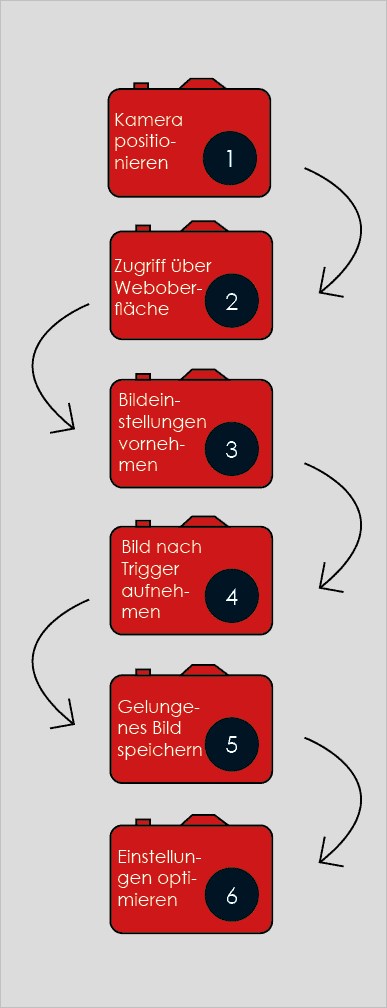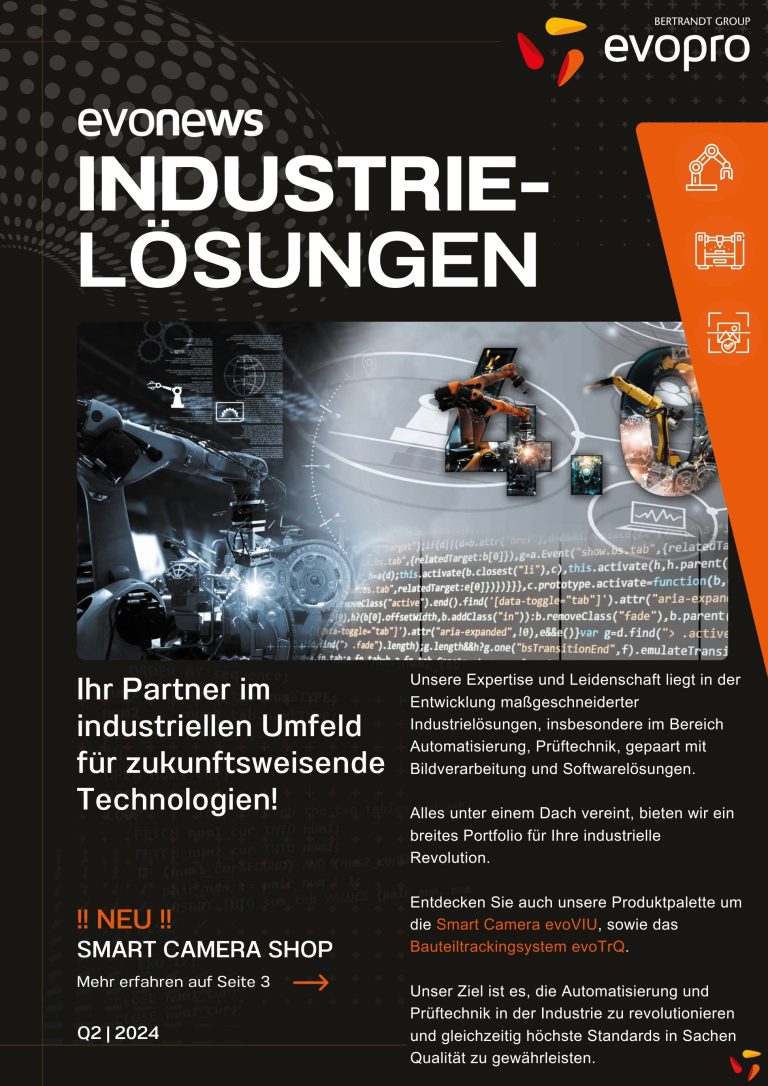Smart equals Smart?
These are the features of a smart camera
Smart devices are now in almost every home. But what makes a smart TV, smart watch or smartphone? And how is the smart camera different?
Smart translates into German as intelligent, clever or clever. When a device is adorned with the additional word Smart, it can usually connect to the Internet. Smart devices are objects capable of communication and computation. The smartwatch can be used to receive messages, the smartphone can be used to monitor the smart home and the smart TV can be used to stream series.
Industry 4.0 is on the rise. There is talk of a next industrial revolution and that means embedded systems in machines, completely networked production lines or the use of smart devices. This promotes productivity, efficiency and, ideally of course, company profits. For this reason, the demand for smart cameras in industrial companies is also increasing enormously.

But what makes a smart camera so smart?
The smart camera, as we are developing it, combines different areas. Primarily it is a camera and can take pictures. But ultimately it is the all-rounder among the cameras. It covers the areas of image acquisition, industrial image processing and communication in one. What is exciting about the camera’s field of application, however, is not the images themselves, but the information that can be read from them and that the smart camera provides. What is the code on my component? Does my component have any damage in certain areas? What are the distances from x to y? The smart camera can see all this. Pretty smart, huh?
The Smart Camera deserves the additional word Smart for several reasons:
- Autonomy: The camera operates autonomously. Once all the settings have been made, the camera ultimately no longer needs the user and performs its tasks independently.
- Connectivity: The camera can connect to the Internet or industrial network endpoints for easy control and data transmission.
- Ambient detection: The camera is aware of its surroundings. Triggers can be used to synchronize the camera with the system clock.
- User interaction: Via a web interface, the user can interact with the camera and make individual settings.
The areas of application for smart cameras can be extremely diverse. They are often found in production lines, but there are basically no limits, as the cameras are usually not very large and can find a place in any environment.

As a result, many different industries, from automotive and agriculture to forestry, research and the food industry, are now benefiting from smart cameras. To give you a better idea of how smart cameras can be used in practice, here are some examples from the evoVIU smart camera repertoire.
- The evoVIU is used, for example, to read out TC stamps in real time during a production process. The embossing structure and quality can be checked, a correct embossing counter pre-definition can be ensured and the test digit stamp can be compared with measured process data and errors.
- Another task of the evoVIU is to detect scratches and dumps in the press line. The modularized and compactly installed lighting units of the evoVIU allow the realization of various lighting scenarios, which are indispensable because they allow special pre-processing functions to be carried out. The evoVIU can thus distinguish between good, warning and defective components and detect defined features from defective components. In order to additionally optimize the processes, limit values can be individually readjusted.
- One last example: The evoVIU checks the quality of weld seams on stamped and bent parts. The advantage of the smart camera is that it can be easily integrated into laser welding systems due to its small and robust design and can be triggered via triggers in the system.
Press contact
-
Im Gewerbepark A52
D-93059 Regensburg - info[at]evopro-ag.de
- (+49) 941 899645-0
- (+49) 941 899 645-99



